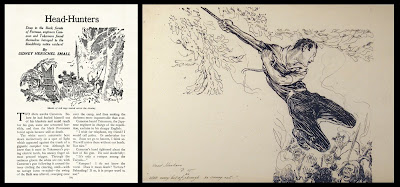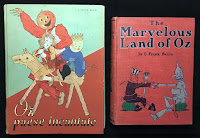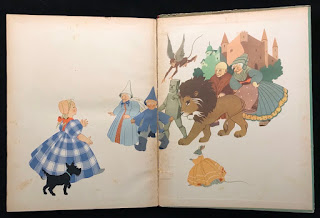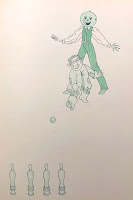I have three examples of this style of work, but I hadn't tried tracking down where the drawings may have been originally used. One is clearly labeled, while the other two have some notations but no definite instructions. Thanks to some swift research by Atticus Gannaway, I now know what my mystery drawings were intended to illustrate.
The labeled drawing was published in the December 20th, 1930 edition of Argosy Magazine. Argosy was the original pulp, starting in 1896 and running until 1942. For the cheap paper of the pulps, drawings were best when bold with strong line work - a style well suited to Neill! This particular illustration was used for the fourth and final installment of Murder on the High Seas, written by George F. Worts. It's shown here together with the magazine containing the first installment.
The back of the drawing bears the information of title, date and author, together with the stamp of the Frank A. Munsey Co., the publishers of Argosy.As it turns out, the other two drawings were not used for publication, making identification a bit trickier - but Atticus did track them down!
The first was intended for a story in Adventure magazine, from February 15th, 1929. This was titled Off Finisterre, and written by Albert Richard Wetjen. A Neill drawing was used for the magazine, but it appears to be a simpler variation of the one in my collection. In both cases a man is seen on the deck of a ship, shooting a flare into the night sky. The published drawing is tall and narrow, rather than the square proportions of the unpublished version, which may explain why a different drawing was needed. The published version is more dramatic, with large areas of shadow and black sky - which may be another reason for the change. A notation reading "Off Finistere" is written on the unpublished piece.






















































